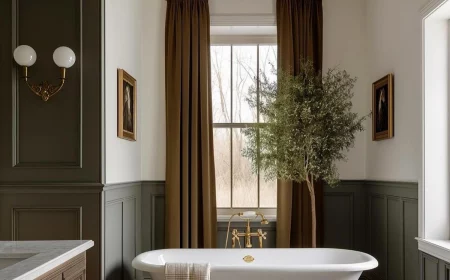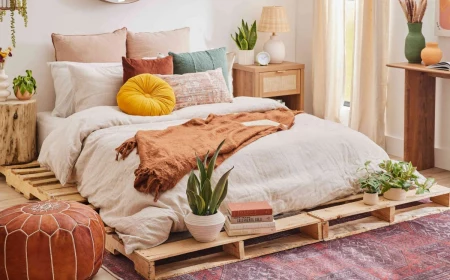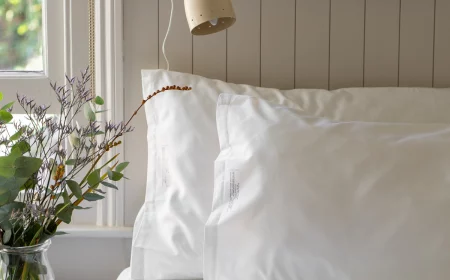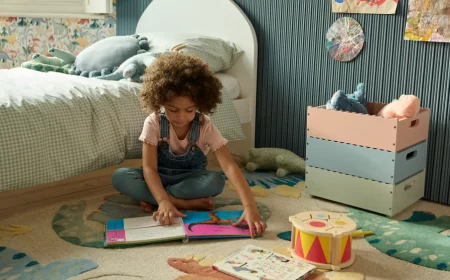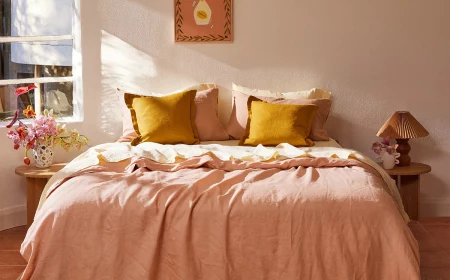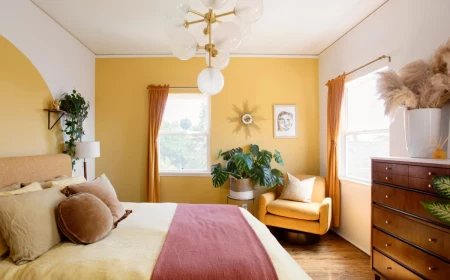How to Design a Bedroom That Genuinely Restores You (An Insider’s Guide)
After years in the design world, I’ve learned one simple truth: a bedroom’s success has nothing to do with passing trends. It’s about building a foundation that truly supports rest. Think about it—we spend a third of our lives in this one room, yet it’s often the last place we put any real thought. People will drop a fortune on a kitchen they use for an hour a day but sleep in a room that feels like a total afterthought.
In this article
So, my approach isn’t about chasing the color of the year or the trendiest furniture. It’s about getting the fundamentals right—the things that make a bedroom feel right. We’re talking about the science of light, the feel of different materials, and the simple logic of a good layout. These are the elements that will still be serving you long after a particular shade of gray is out of style.
This guide walks you through the exact process I use with clients, focusing on building a space that’s functional, comfortable, and deeply personal, from the ground up.
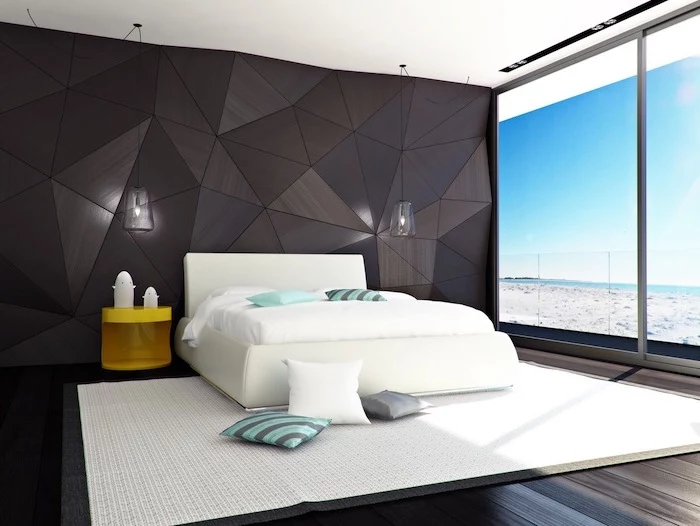
The Foundation: Nail the Layout First
Before you even think about paint swatches or pretty bedding, you have to get the layout right. This is the skeleton of your room, and if it’s wrong, nothing else will feel right. A bad layout means constantly bumping into furniture and feeling cramped, no matter how nice your decor is. Honestly, it’s the most important decision you’ll make and the hardest to fix later.
Give Yourself Room to Breathe: Clearances and Flow
The first thing I do in any room is map out the circulation paths—those invisible lanes we walk through every day. To do this yourself, grab some graph paper or use a free online tool (the IKEA planner or SketchUp Free are great for this). Draw your room’s dimensions, then start placing blocks for furniture. This little exercise can save you a world of headache and heavy lifting.
You need clear paths from the door to the bed, to the closet, and to the windows. Here are the minimums the pros use to make a room feel effortless:
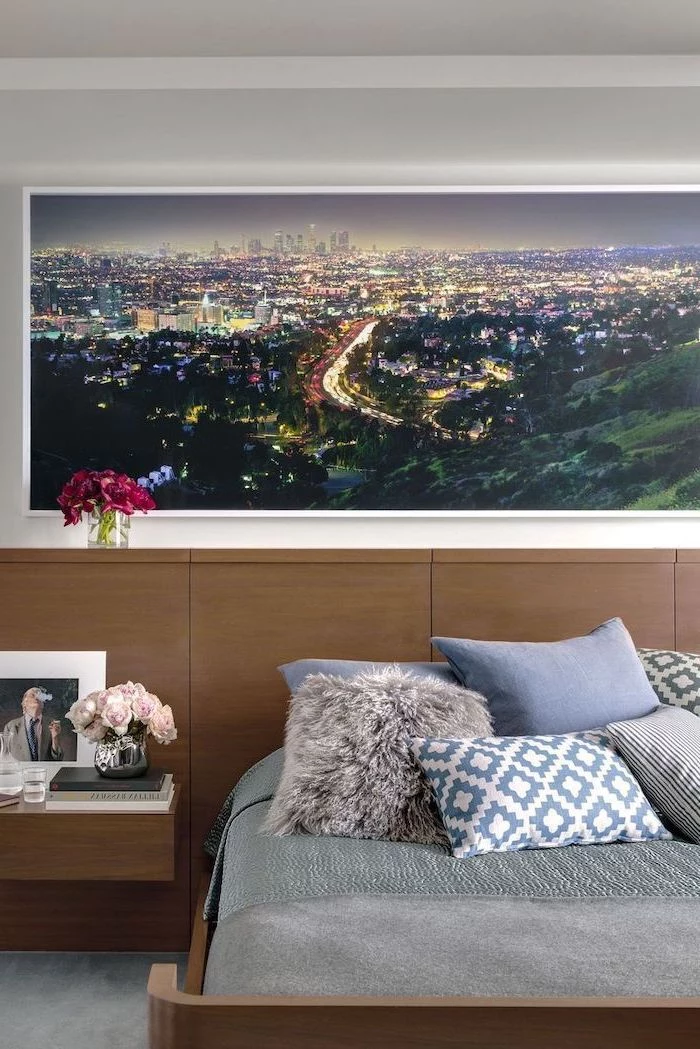
- Major Pathways: For the main walkway from the door, aim for at least 36 inches of clear space. You can squeeze by with 30 inches in a tiny room, but it will feel tight.
- Beside the Bed: You need about 24 inches on either side of the bed. This gives you enough space for a nightstand and, more importantly, makes it possible to make the bed without a major struggle.
- In Front of Furniture: Leave at least 30 inches in front of a dresser or closet. This allows you to fully open drawers and doors without contorting your body. I once had a client who bought a gorgeous armoire but could only open one door at a time because the bed was too close. We had to rethink the whole layout. Pause for a second and look at your own bedroom. Do you have 30 inches? It’s a common pinch point people never notice!
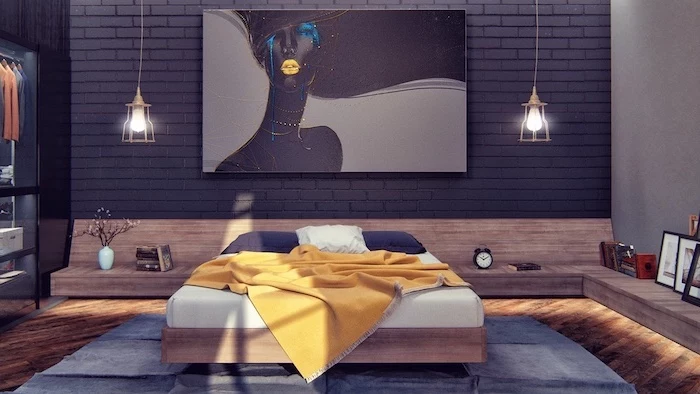
Where to Put the Bed: The Room’s Anchor
The bed is the biggest piece of furniture and the natural focal point, so its placement dictates everything else. In most design traditions, the best spot is on the wall opposite the door. This gives you a clear view of the entrance from your bed, which creates a subconscious feeling of security. It’s called the ‘command position’ for a reason.
If that layout doesn’t work in your space, the next best spot is along the longest uninterrupted wall. A quick tip: try to avoid placing your bed directly under a window. It can make the room feel drafty, and dealing with a headboard combined with curtains can be a real design headache.
The Vibe: Mastering Light and Color
Once the furniture is in the right spot, we can focus on the atmosphere. Light and color are incredibly powerful tools that directly impact our mood and sleep. Getting this wrong is the difference between a sanctuary and a space that just feels… off.
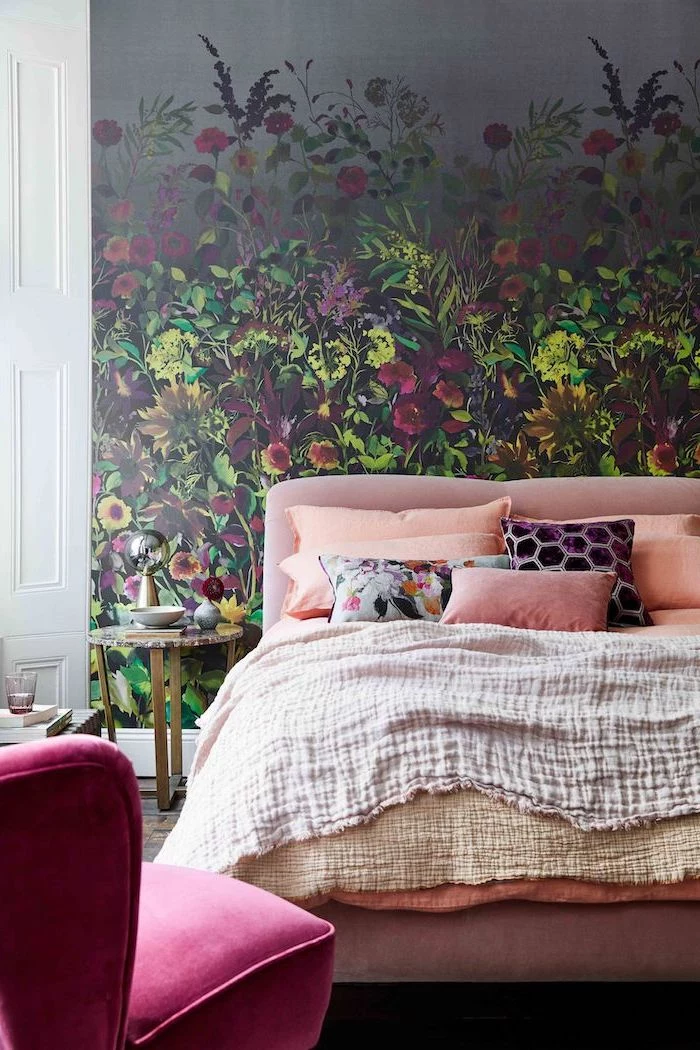
Layering Your Lighting Like a Pro
The single biggest mistake I see is a room with one, lonely, harsh overhead light. It’s just awful. A well-designed room uses layers of light to create a mood that can adapt to what you’re doing.
I always plan for three layers:
- Ambient Light: This is your general, room-filling light. It could be a central flush-mount light or recessed lighting. The key—and this is absolutely non-negotiable in a bedroom—is that it MUST be on a dimmer switch. Full brightness is for cleaning or finding a lost earring; for winding down, you’ll want it at 20-30% power.
- Task Light: This is focused light for specific activities, like reading in bed. For bedside lamps, a good rule of thumb is to have the bottom of the shade at about chin level when you’re sitting up. This directs light onto your book, not into your eyes. For a good reading bulb, look for something around 450 lumens.
- Accent Light: This is the magic layer. It’s a small lamp on a dresser, a light behind a plant, or one highlighting a piece of art. It’s not about illumination; it’s about creating soft, warm pools of light that make a room feel cozy and complete.
A Quick Win: If you do nothing else, go swap all the lightbulbs in your bedroom for ones in the 2700K color temperature range. They’re often labeled “warm white.” This is a $20 fix that takes 10 minutes and will instantly make your room feel more inviting tonight. Avoid bulbs over 3000K; their cool, blueish light is great for an office but has been shown to mess with sleep hormones.
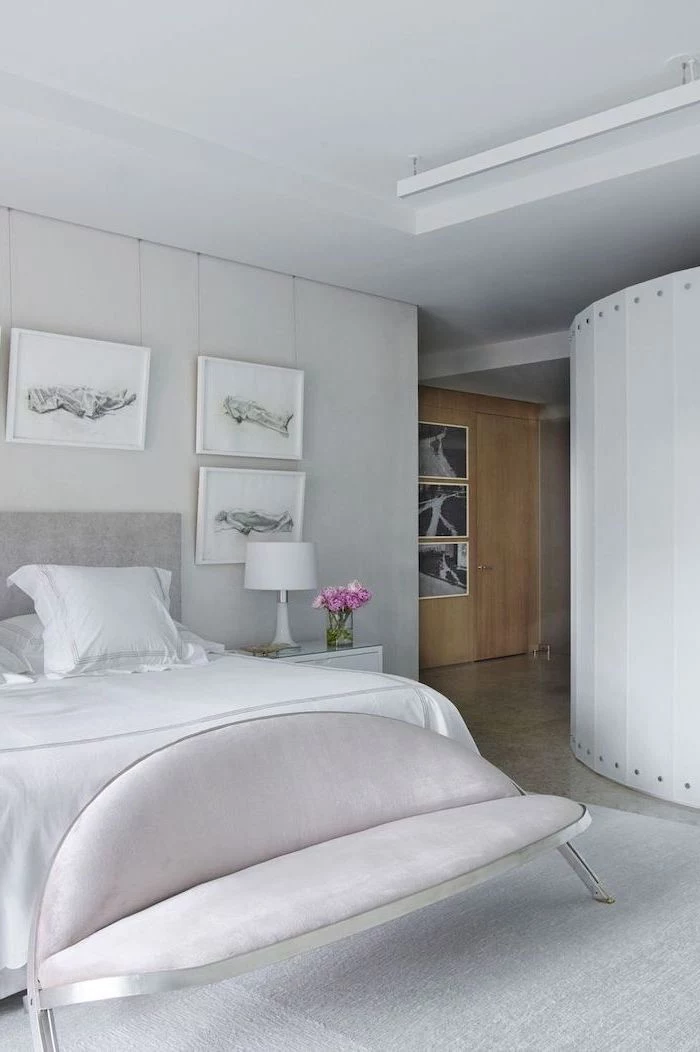
Choosing a Color Palette That Lasts
Forget trendy colors. The right color for your bedroom is simply one that makes you feel calm. For some, that’s a warm, earthy neutral. For others, it’s a deep, moody blue or green. By the way, if you’re thinking of going with a dark, dramatic color, here’s a heads-up: dark matte paints are not forgiving. They will highlight every single bump and imperfection on your walls, so the prep work needs to be flawless.
To keep things balanced, use the 60-30-10 rule. It’s a classic for a reason.
- 60% Main Color: This is your dominant shade, used for most of the walls. It sets the tone.
- 30% Secondary Color: This supports the main one. Think curtains, bedding, or an accent wall.
- 10% Accent Color: This is your pop of fun, used in small doses for things like pillows, art, and decor.
For example, you could do 60% of the room in a soft sage green (like Sherwin-Williams’ ‘Sea Salt’), 30% in a creamy off-white for your bedding and curtains, and then 10% in a deep terracotta for a few throw pillows and a vase. It’s a simple recipe that just works.
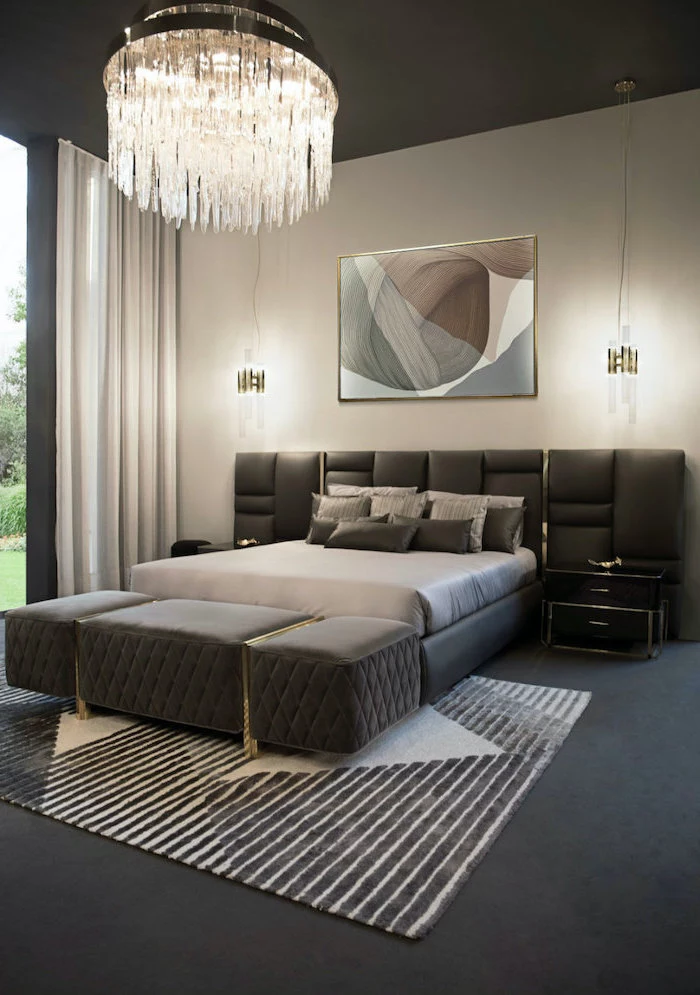
The Feel: Getting a Handle on Materials
What often separates a professionally designed room from an amateur one is texture. A room with only smooth, flat surfaces feels cold and sterile. Layering different materials adds warmth, depth, and—critically for a bedroom—sound absorption.
Your Bedding: Where to Spend Your Money
You spend hours literally wrapped in your bedding, so quality here matters more than almost anywhere else. This is where I advise clients to invest.
- Linen: My personal favorite for its breathability. It’s incredibly durable and just gets softer with every wash. It has a naturally rumpled, relaxed look that’s very inviting. Heads up on the price: a quality queen linen duvet set can easily be $250+, but it will outlast cotton several times over. You’re paying for longevity.
- Cotton Percale: This is a simple weave that feels cool and crisp to the touch—like a classic hotel sheet. If you sleep hot, percale is a fantastic choice. For a great set, you can expect to pay around $150. Don’t fall for the thread-count myth; anything between 200-400 is perfect.
- Cotton Sateen: This weave feels silky and smooth and has a slight sheen. It’s a bit heavier and cozier than percale, so it’s better if you tend to get cold at night.
- Wool: Don’t forget wool for blankets and throws! It’s an amazing natural temperature regulator, keeping you warm without making you sweaty. A good wool blanket is a true buy-it-for-life item.
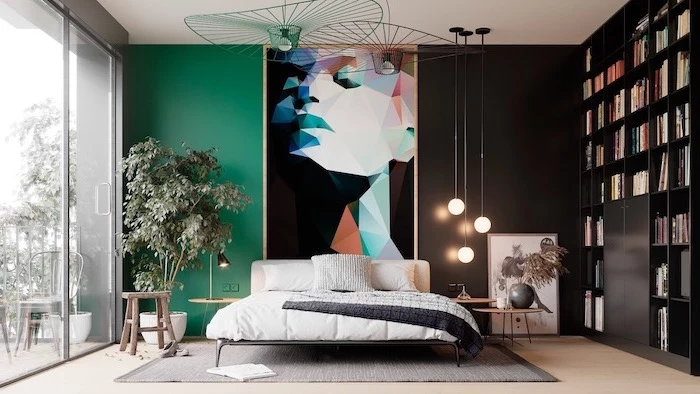
Rugs and Curtains: Softening the Edges
A bare floor in a bedroom can feel cold and make sounds echo. A good rug provides softness, absorbs sound, and anchors the furniture. Make sure it’s large enough to extend at least 18-24 inches from the sides and foot of the bed, so your feet land on something soft in the morning. A durable wool rug is a classic choice, but it can be pricey—an 8×10 might cost $500 or more. A synthetic (like polypropylene) version from a place like Home Depot or Wayfair can give you a similar look for under $200 and is great for tighter budgets, though it won’t feel as plush or clean as easily.
For windows, layering is key. I often pair functional blackout roller shades (mounted inside the window frame) with soft, decorative curtain panels on a rod. This gives you total darkness for sleeping and a beautiful, filtered light during the day.

What If Your Bedroom Is Also Your Office?
Let’s be real, many of us need our bedrooms to do double duty. But integrating a workspace without wrecking the room’s restful vibe takes some strategy.
If you have to put a desk in your bedroom, the goal is to make it “disappear” when work is done. A secretary-style desk with a fold-down front is perfect for this—just close it up and the clutter is gone. You can find modern versions at places like Crate & Barrel or vintage ones online. Another great trick is to use a decorative folding screen to physically partition the desk from the rest of the room. It’s a simple visual cue that helps your brain switch from work mode to rest mode.
And don’t forget storage! Clutter is the enemy of calm. Use the height of your room with tall bookshelves, get nightstands with drawers instead of open tables, and use lidded containers for under-bed storage. Every little bit helps.
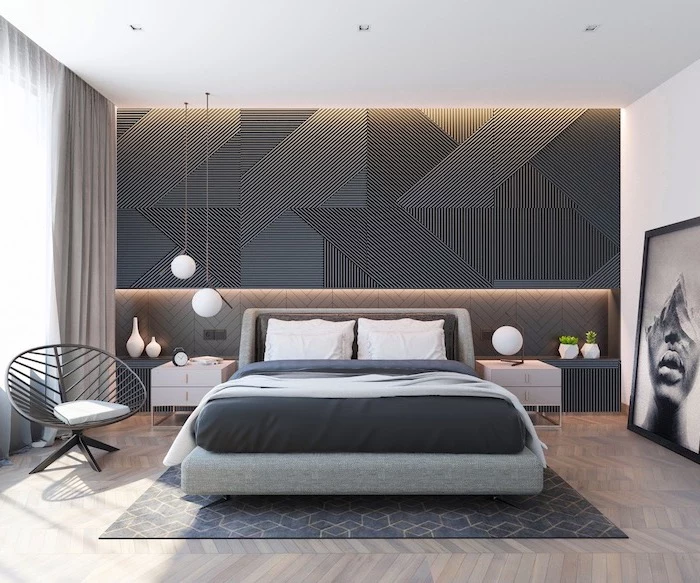
A Final Word on Safety and When to Call a Pro
Creating a beautiful room is one thing, but creating a safe one is everything. There are a few things that are just not worth risking.
- Electrical Work: Please, please, please hire a licensed electrician for any wiring. Faulty wiring is a massive fire hazard. From experience, I can tell you that fixing the scary, dangerous work of an amateur is far more expensive than just hiring a pro in the first place. Expect a small job, like adding an outlet, to cost between $150 and $500. It’s the best money you’ll ever spend on a project.
- Furniture Anchoring: Any tall, heavy piece of furniture—dressers, bookshelves, armoires—MUST be anchored to the wall. This is a critical safety step to prevent tip-over accidents, especially if kids are ever in the house. The kits are cheap and easy to install.
- Air Quality: New paint, mattresses, and furniture can release chemicals (called VOCs) into the air. In a room where you breathe for eight hours straight, that’s a big deal. Always choose low-VOC or zero-VOC paints. And if you buy a new mattress or a piece of particleboard furniture, let it air out in the garage or a well-ventilated room for a few days before bringing it into the bedroom.
Building a bedroom that truly restores you is a journey, not a weekend makeover. Start with the layout. Then slowly layer in the right light, colors, and textures. Choose honest materials that are built to last. If you follow these principles, you’ll create a space that doesn’t just look good, but feels deeply right for years to come.
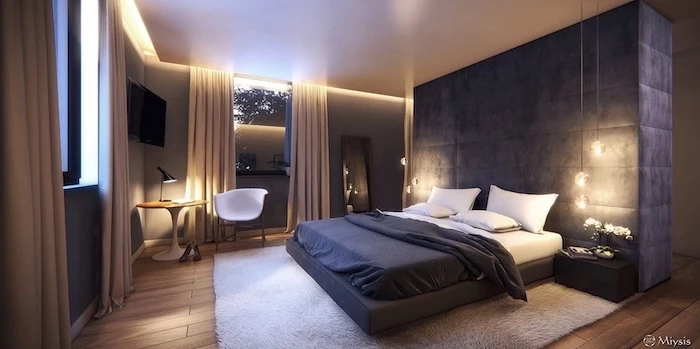
Inspirational Gallery
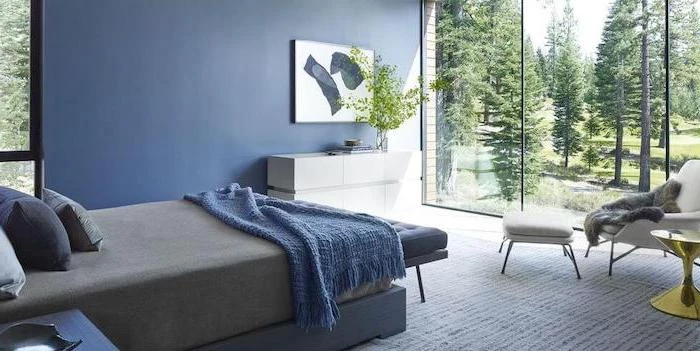
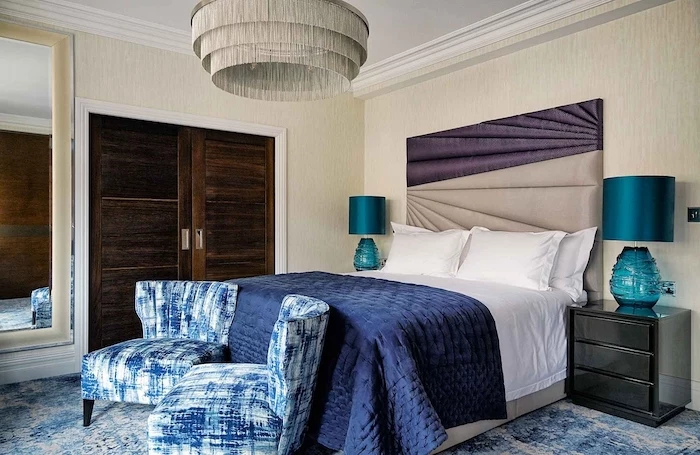
Scent can fundamentally alter the mood of a room. Instead of synthetic plug-ins, consider a simple ceramic diffuser with pure lavender or chamomile essential oil. Start it 30 minutes before bed to create a calming ritual that signals to your brain it’s time to wind down.
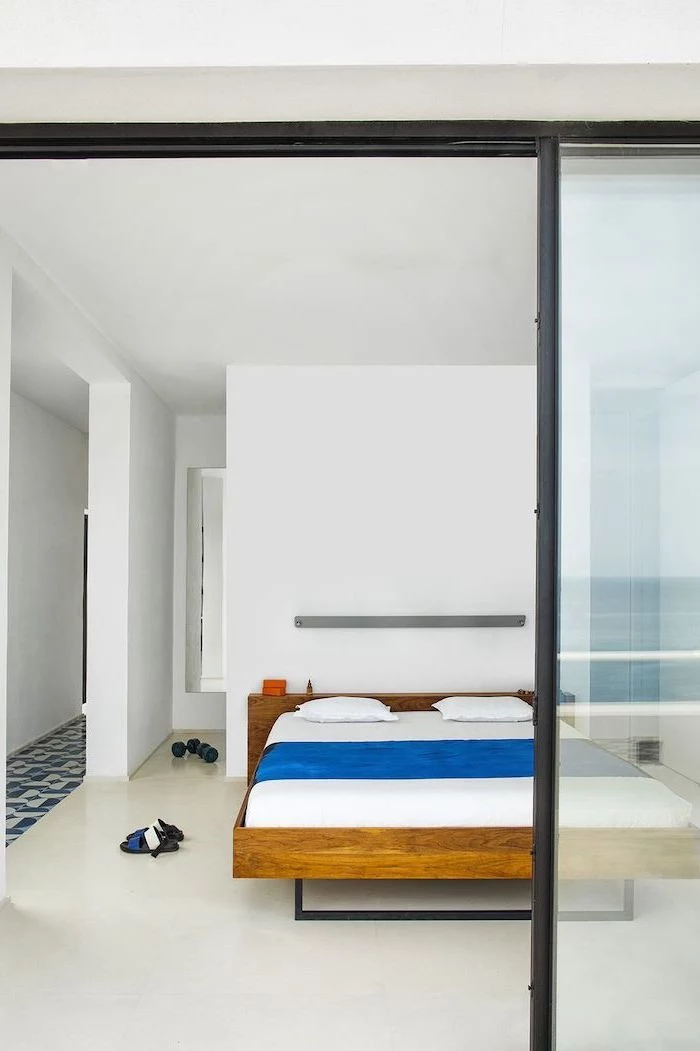
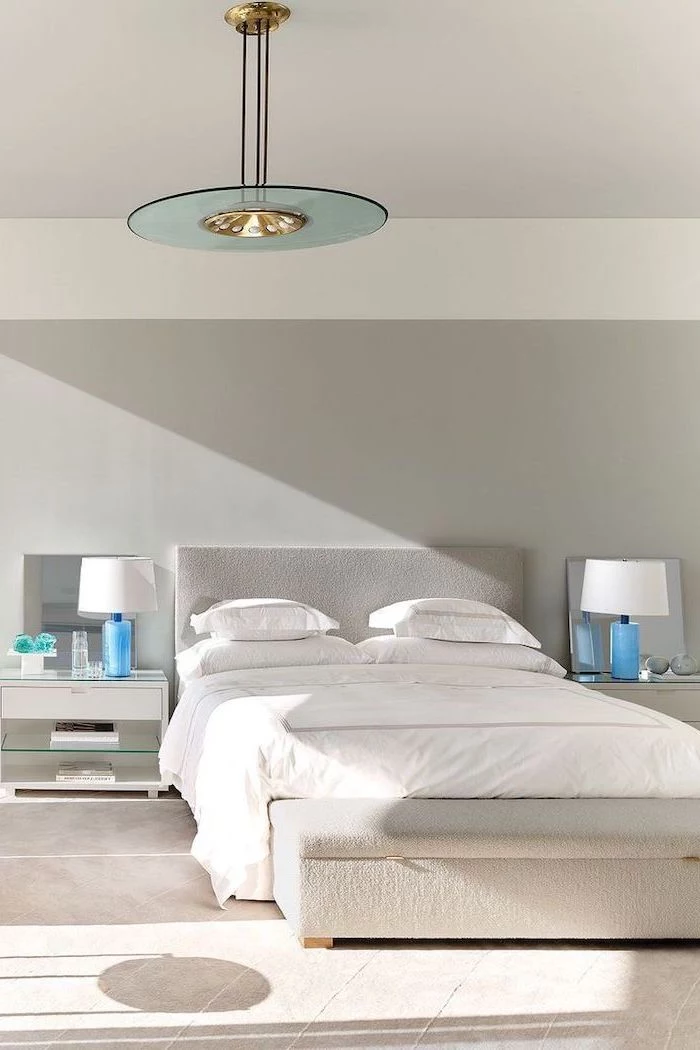
- A small lamp with a warm, dimmable bulb.
- A carafe of water.
- A book or journal.
- A small dish for jewelry or lip balm.
The key? Keeping your nightstand edited to only the essentials for a clutter-free mind. It’s a functional surface, not a storage unit.
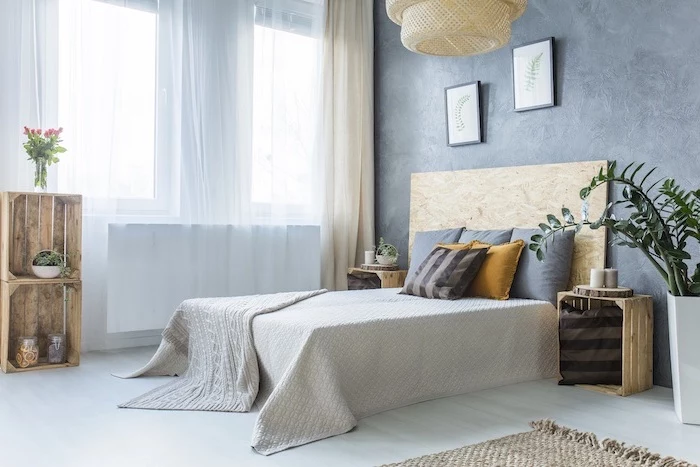
The right paint finish matters as much as the color. For that soft, enveloping feel you see in designer bedrooms, opt for a chalky, ultra-matte finish. Farrow & Ball’s Estate Emulsion or Benjamin Moore’s Aura Matte are masters of this, as they absorb light rather than reflecting it, creating a deep, velvety calm.
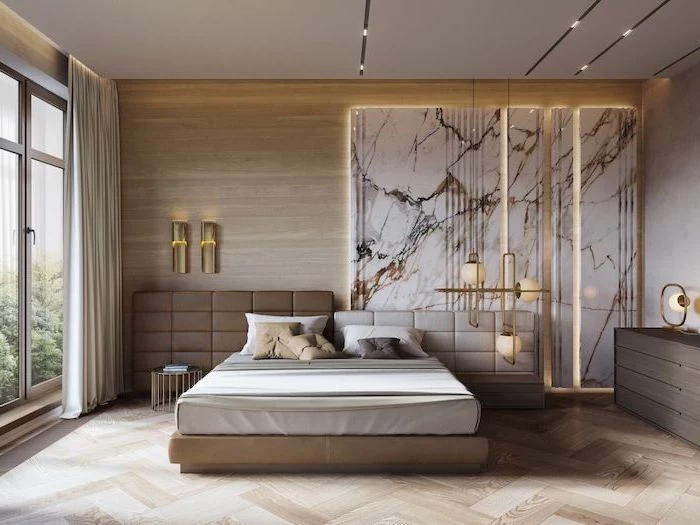
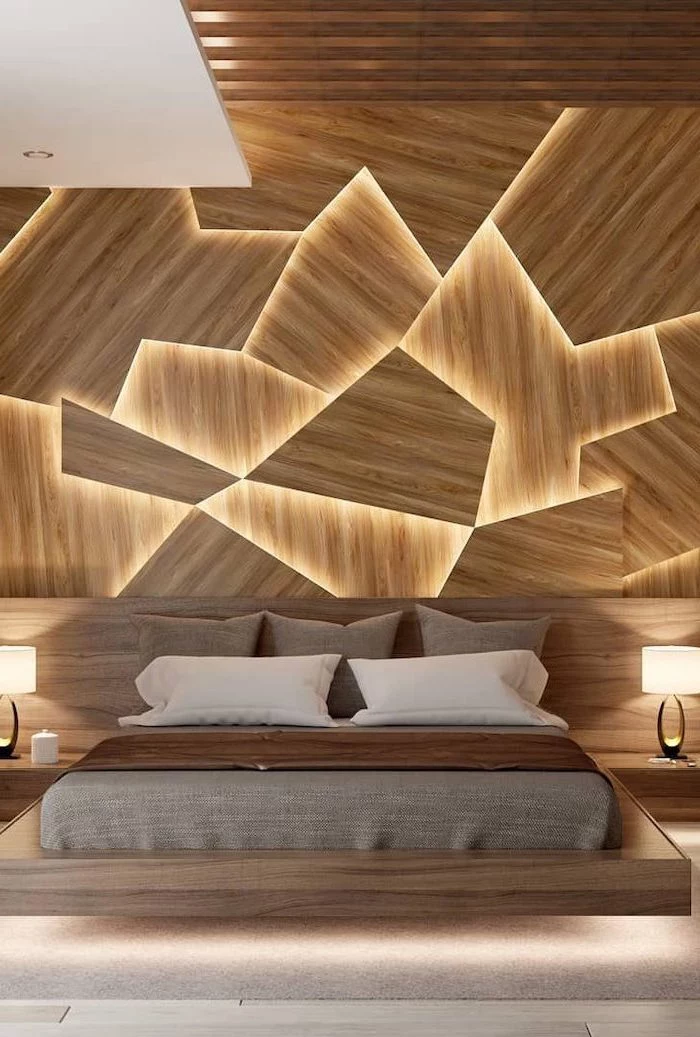
Even low levels of light from electronic devices or streetlights can disrupt your circadian rhythm and suppress melatonin production by over 50%.
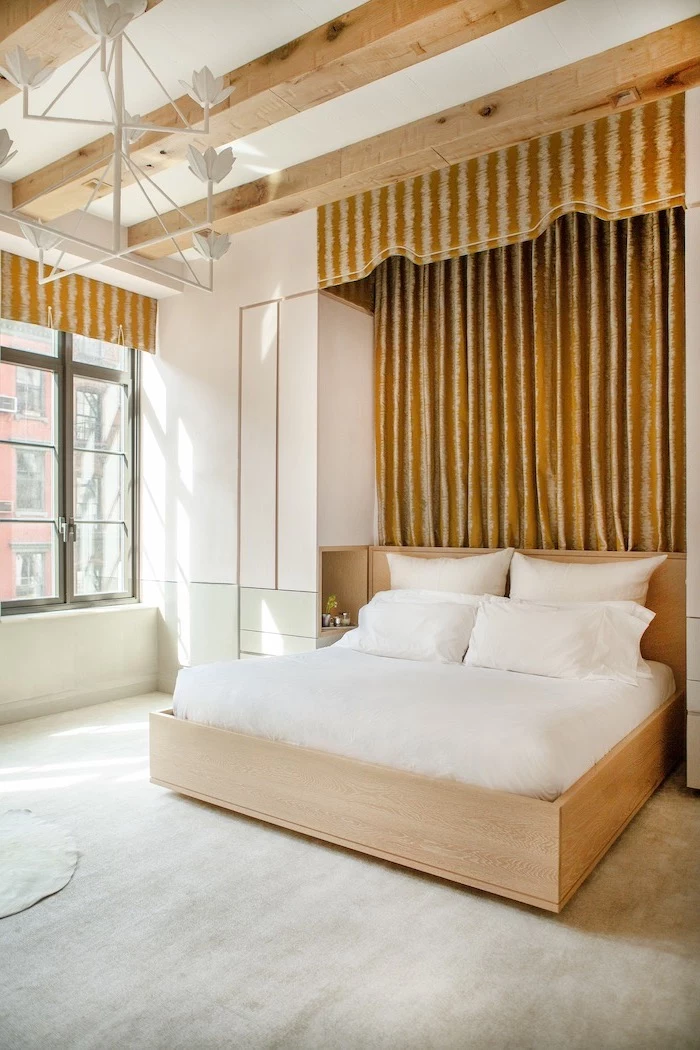
Creating a truly luxurious bed is all about layering textures. It’s a tactile experience that goes beyond a simple duvet. Think about combining different materials to delight the senses.
- Start with crisp percale or soft linen sheets.
- Add a lightweight quilt or coverlet for an intermediate layer.
- Fold a chunky knit or faux fur throw at the foot of the bed.
- Finish with a mix of velvet and silk-blend accent pillows.
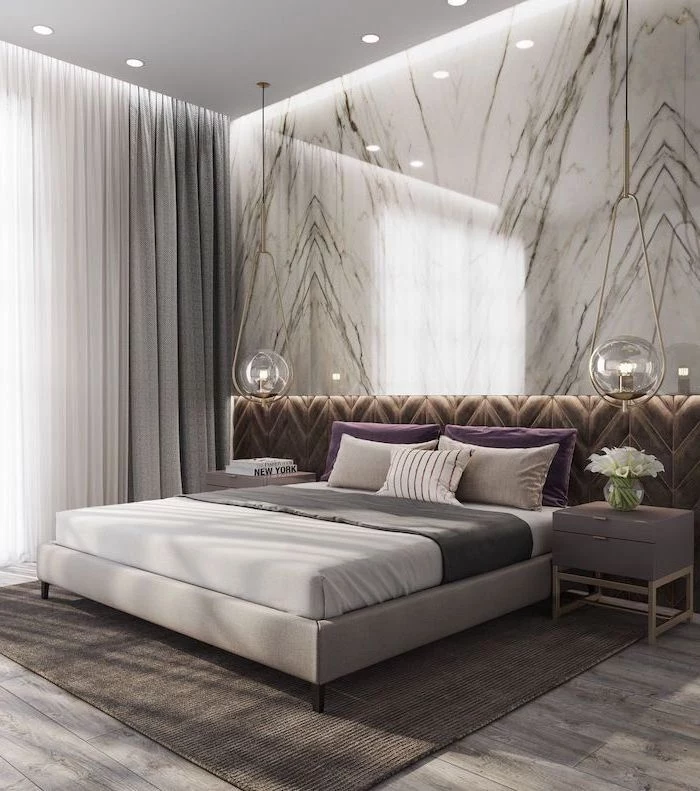

What’s the biggest mistake people make with bedroom rugs?
Choosing one that’s too small. A ‘postage stamp’ rug that just sits in the middle of the floor makes the room feel disconnected and small. For a truly grounded feel, the rug should be large enough to extend at least 24 inches on either side of the bed, giving your feet a soft place to land in the morning.
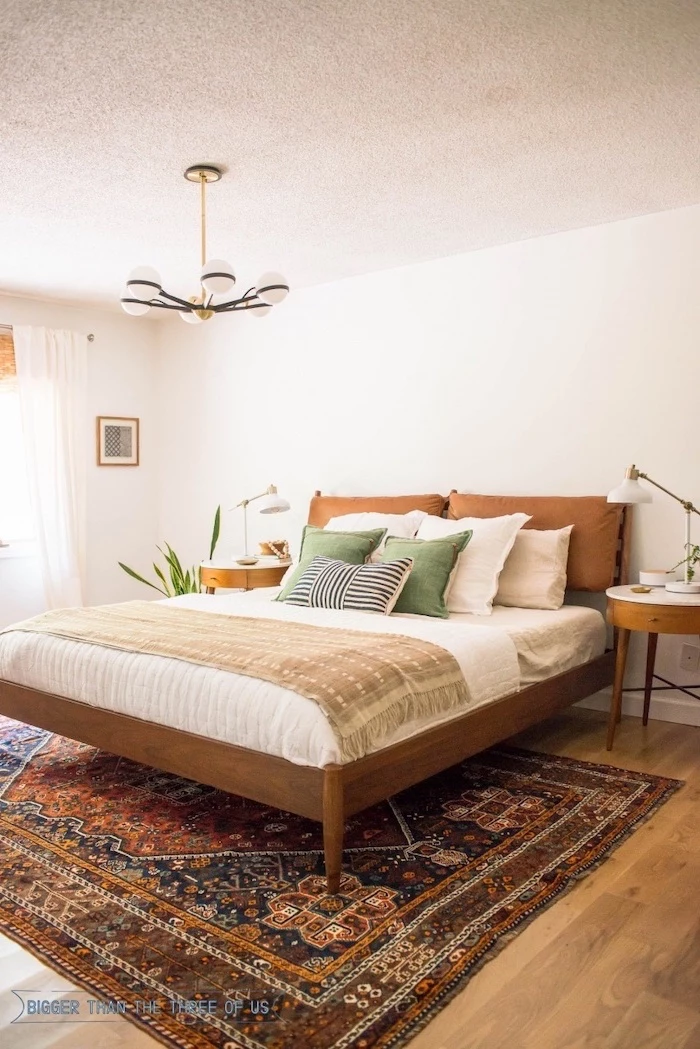
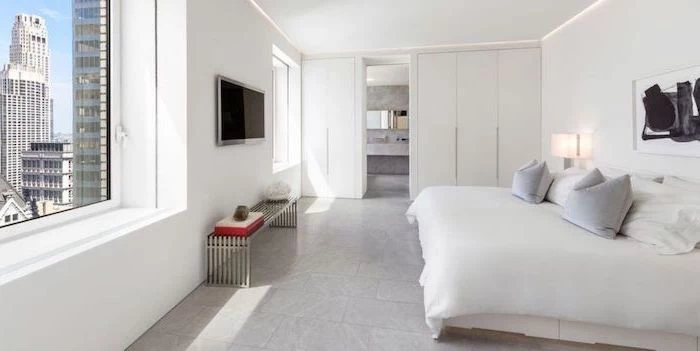
Linen Sheets: Made from flax, they are incredibly breathable, get softer with every wash, and have a relaxed, lived-in look. Perfect for hot sleepers and those who love a casual, slightly rumpled aesthetic from brands like Parachute or The Citizenry.
Cotton Percale Sheets: Known for their crisp, cool feel, like a freshly ironed hotel shirt. They have a tight weave that’s smooth and matte. Ideal for those who want that classic, five-star hotel experience. Brooklinen’s Classic Percale is a popular benchmark.
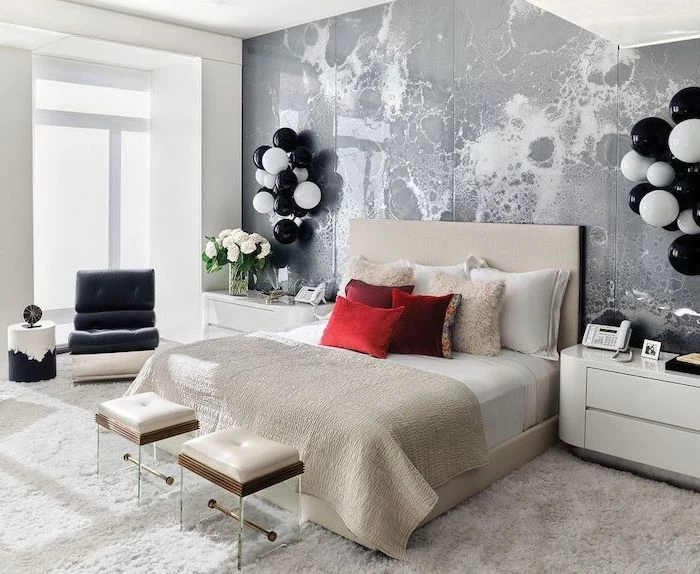
A study by Princeton University Neuroscience Institute found that physical clutter bombards our minds with excessive stimuli, causing our senses to work overtime on stimuli that aren’t necessary.
In the bedroom, this translates to a subtle but constant state of stress. By clearing surfaces and keeping only beautiful, functional objects in sight, you’re literally giving your brain a break and paving the way for deeper rest.
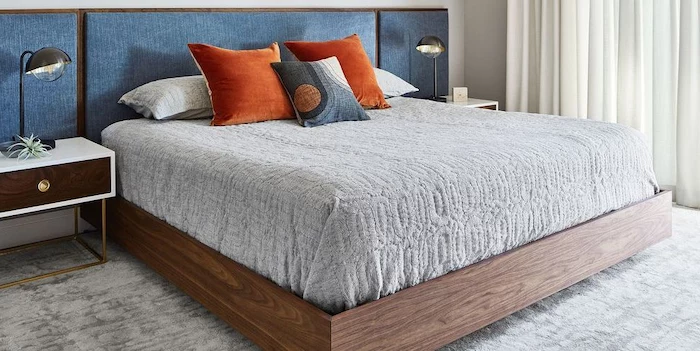
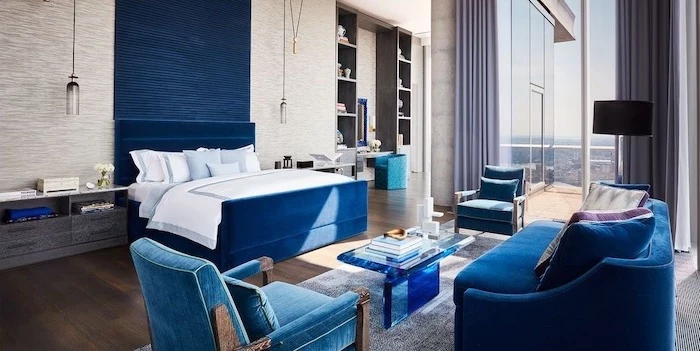
- Creates a soft, ambient glow for relaxing.
- Provides bright, focused light for reading in bed.
- Offers a very low-wattage pathlight for midnight trips to the bathroom.
The secret? A layered lighting plan. Combine an overhead fixture on a dimmer, directional sconces beside the bed, and perhaps a smart bulb like Philips Hue set to a warm, low light—all controlled separately.

Embrace biophilic design by bringing nature in. This goes beyond a single potted plant. Consider materials like a woven jute rug, a solid oak bedside table, or art depicting serene landscapes. These elements connect us to the natural world, which has been proven to lower stress levels.
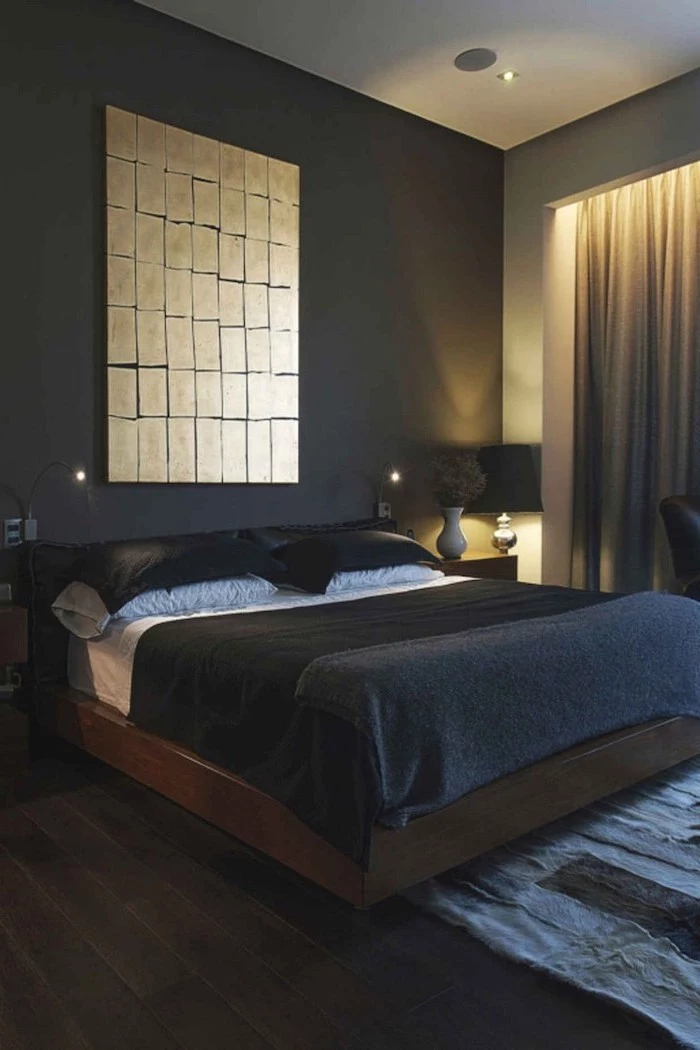
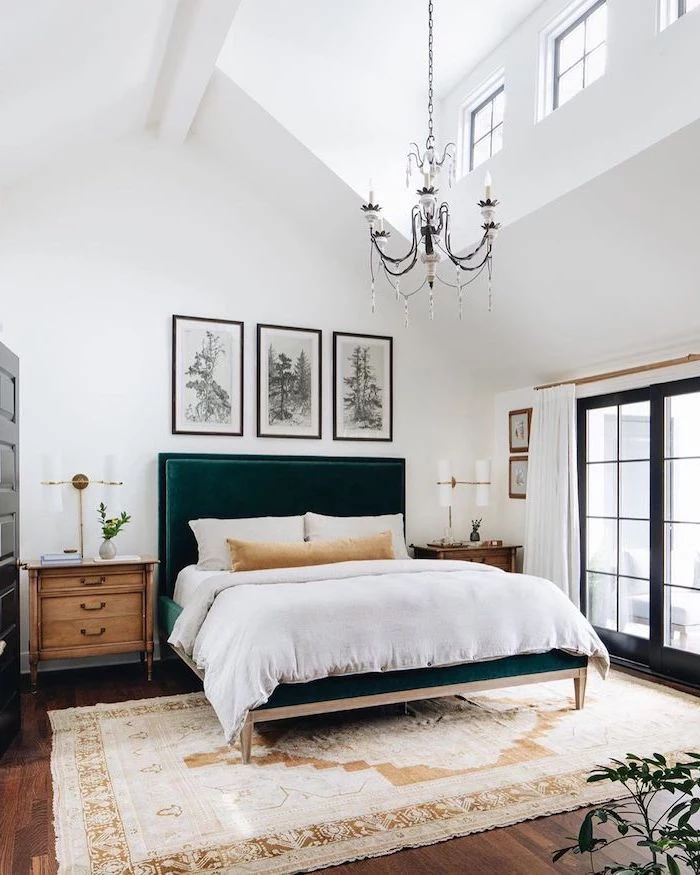
Create a ‘docking station’ for your tech outside the bedroom. This small habit transforms your room into a true sanctuary.
- Charge phones and smartwatches in the kitchen or living room overnight.
- Replace your phone alarm with a gentle sunrise alarm clock, like those from Philips or Hatch.
- Keep laptops and work papers strictly out of the bedroom space.
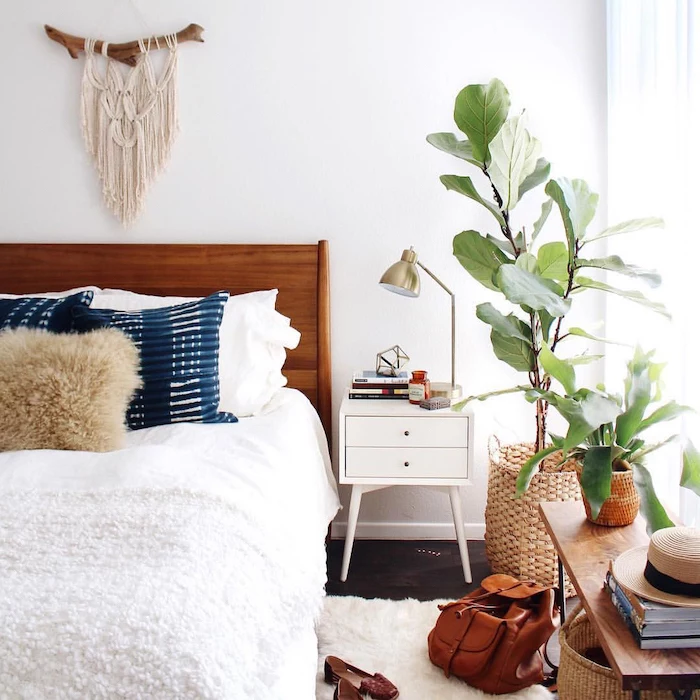
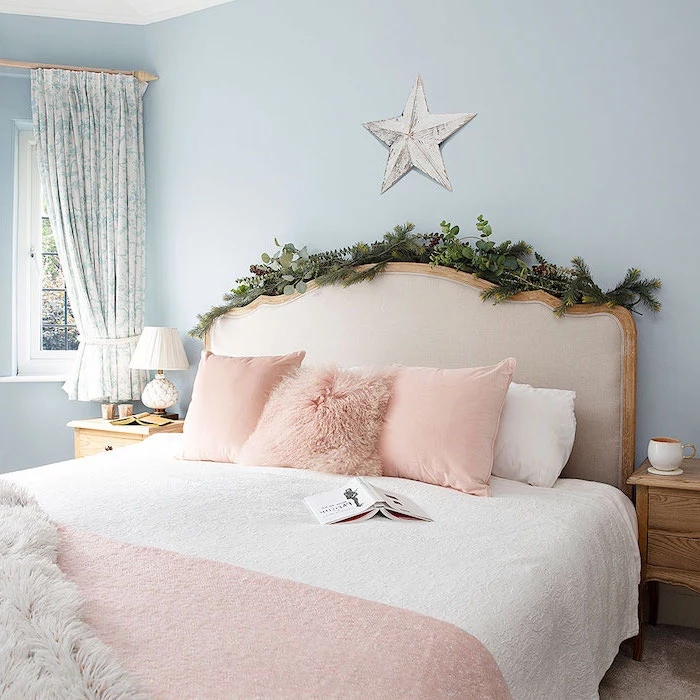
According to the Sleep Foundation, the ideal temperature for sleep is approximately 65 degrees Fahrenheit (18.3 degrees Celsius).
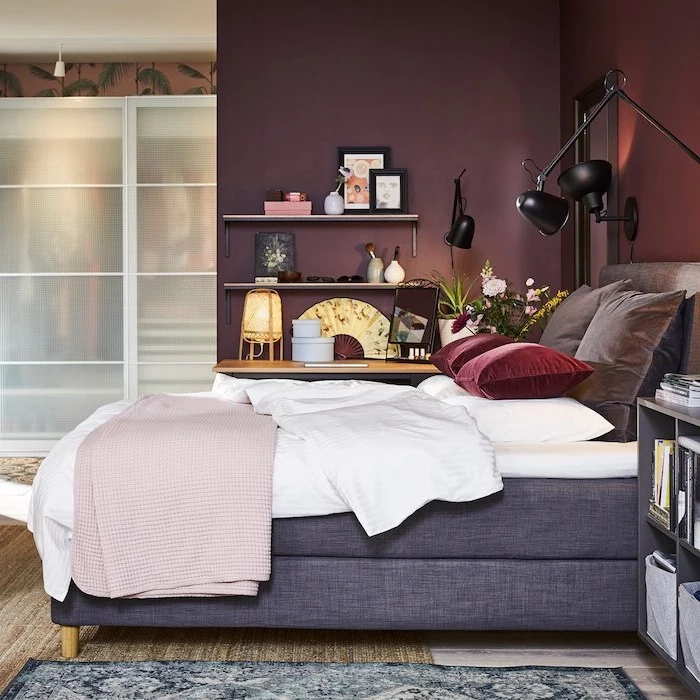
Choose artwork that is restful, not activating. The bedroom isn’t the place for high-energy, chaotic, or overly intellectual pieces. Opt for large-scale, serene abstracts with a soft color palette, calming landscapes, or simple figure drawings. The goal is to give your eyes a place to rest peacefully.
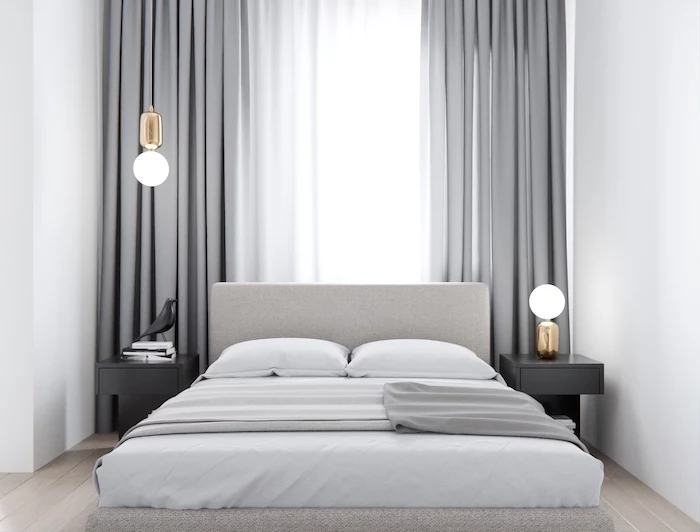
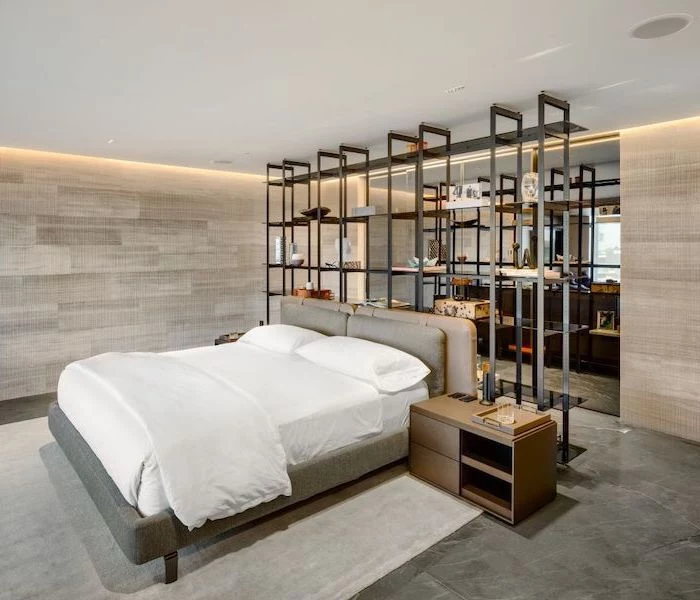
My bedroom has to double as my office. How can I separate work from rest?
The key is creating a visual and ritualistic separation. If possible, place your desk facing a wall, not the bed. Use a beautiful folding screen to hide the desk at the end of the day. More simply, have a ‘shutdown ritual’: close the laptop, put away all papers into a designated box, and turn off the desk lamp. This signals the transition from work to relaxation.
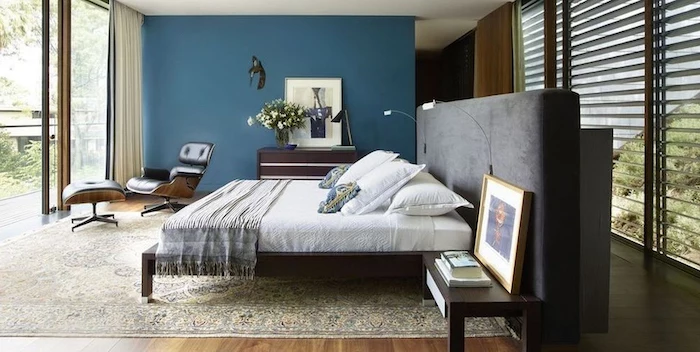
Investing in sustainable bedding is good for you and the planet. Look for materials that prioritize natural fibers and responsible manufacturing.
- TENCEL™ Lyocell: Made from sustainably sourced wood pulp in a closed-loop system, it’s silky soft, moisture-wicking, and hypoallergenic.
- Organic Cotton: Grown without synthetic pesticides, it’s a healthier choice. Look for GOTS (Global Organic Textile Standard) certification.

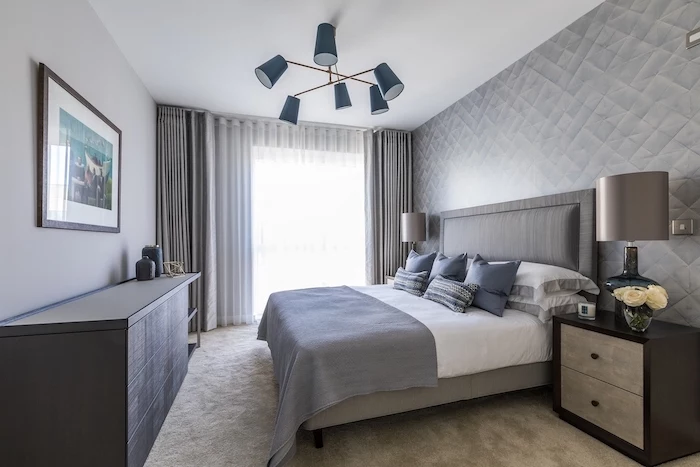
Memory Foam Mattress: Known for its body-contouring ‘hug’ and excellent motion isolation (great if you share a bed). Brands like Tempur-Pedic or Nectar excel here, offering pressure relief for side sleepers.
Hybrid Mattress: Combines the support of innersprings with the comfort of foam or latex layers. This offers a balance of contouring and bounce, with better airflow than all-foam models. Think Casper or Saatva.
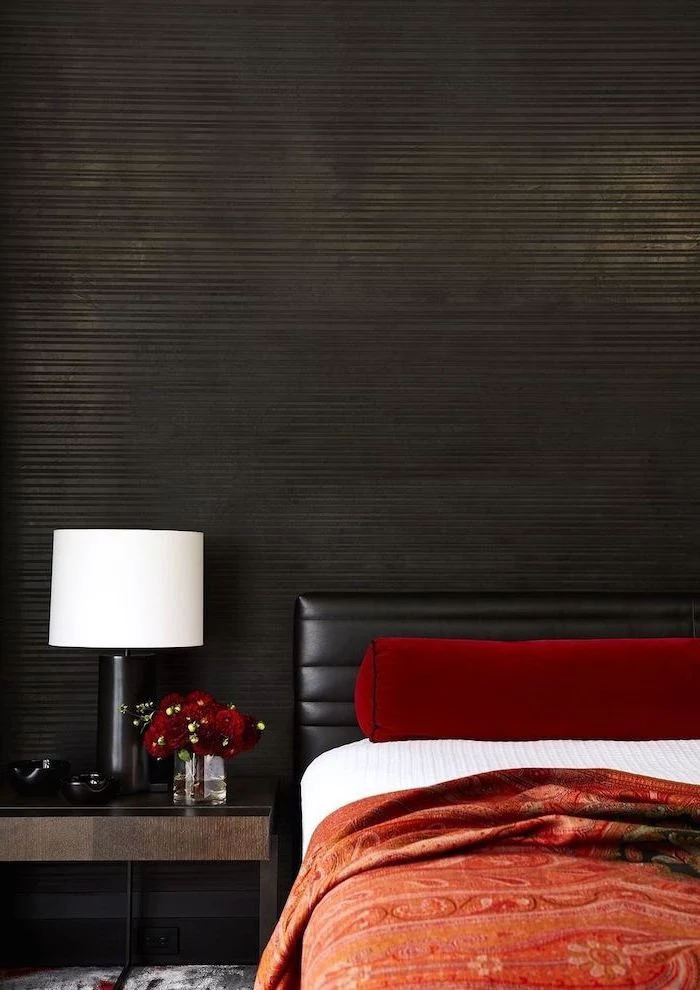
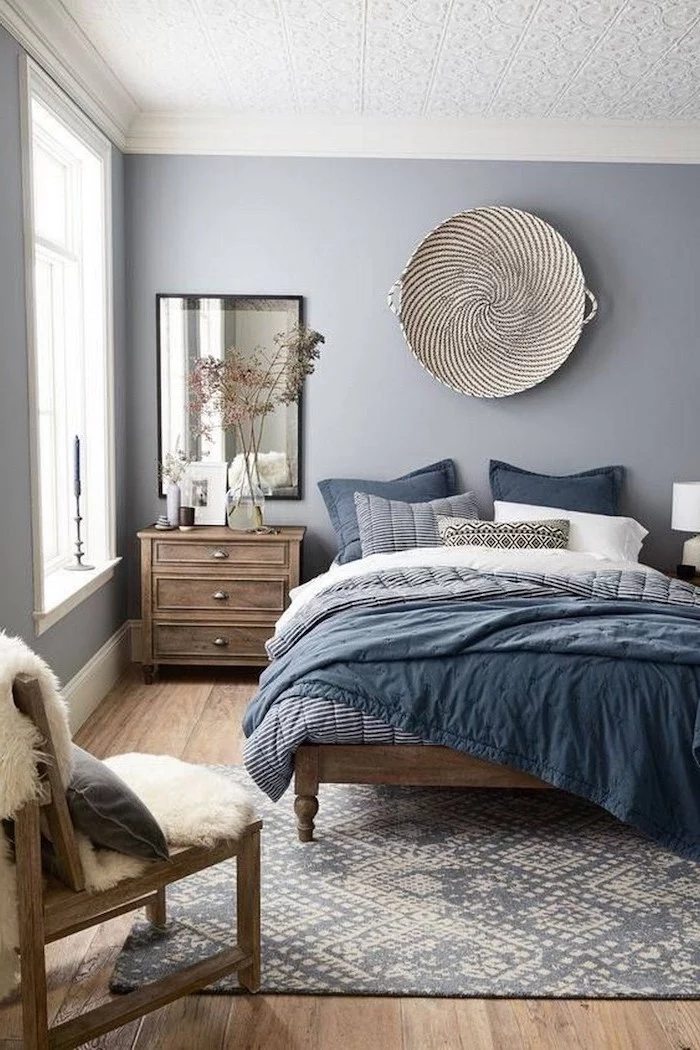
If you have the space, a single, comfortable armchair in a corner can transform your bedroom’s function. It creates a dedicated spot for reading, meditating, or simply putting on your shoes that isn’t the bed. This helps preserve the bed for its primary purpose: sleep.
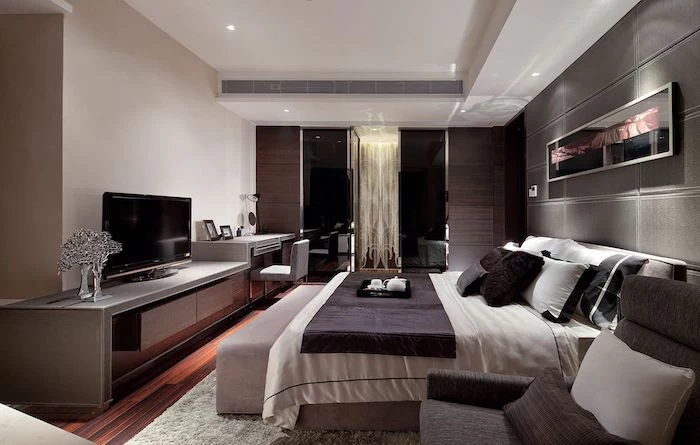
Psychologically, the color green is associated with harmony, safety, and nature. Because it’s at the center of the spectrum, it requires very little adjustment from the human eye.
This is why shades like sage, moss, and muted olive are fantastic choices for bedroom walls. A paint like ‘Cromarty’ by Farrow & Ball or ‘October Mist’ by Benjamin Moore can create an instant sanctuary.
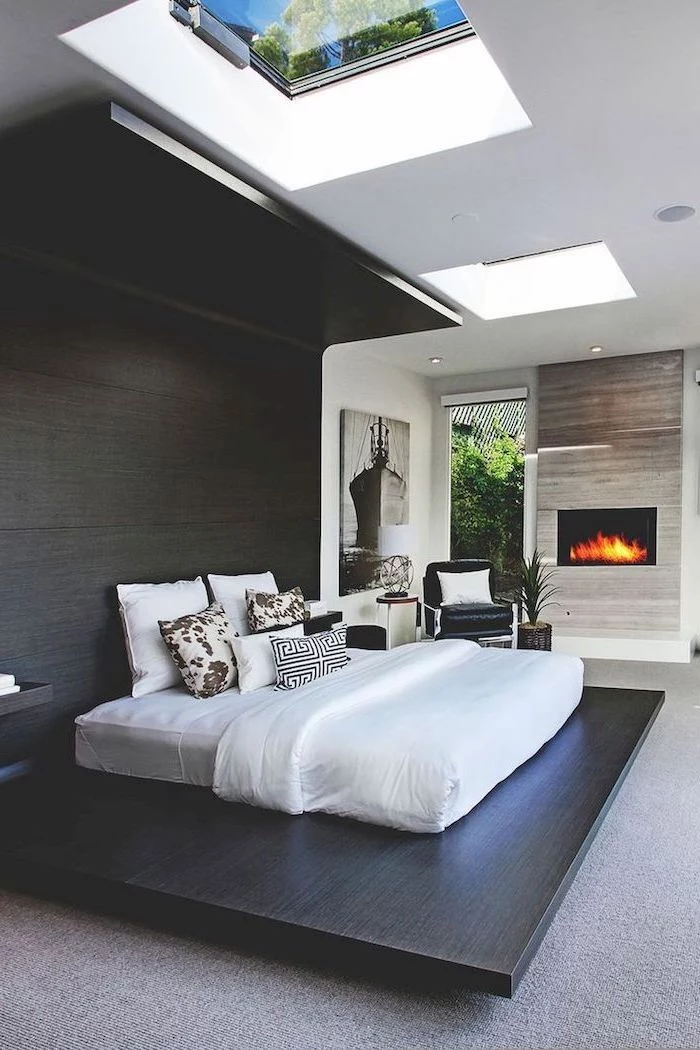
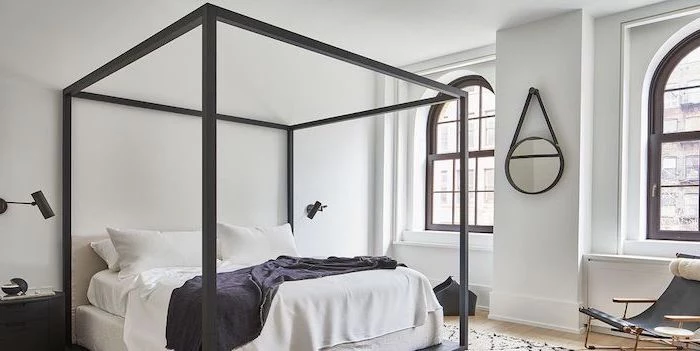
- Muffles sounds from neighbors or other rooms.
- Blocks out street noise for uninterrupted sleep.
- Creates a cozy, cocoon-like atmosphere.
How is it done? By adding soft surfaces that absorb sound. Think thick, plush rugs with a quality pad, heavy lined curtains (velvet is excellent), upholstered headboards, and even textile wall hangings.
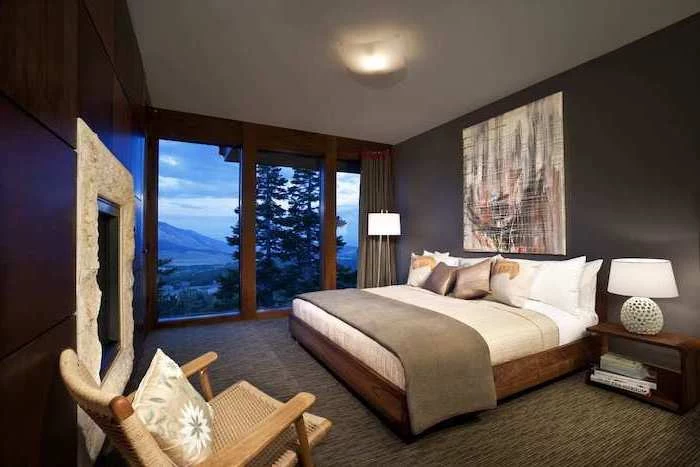
Want a big change on a small budget? Focus on high-impact details.
- Swap out generic drawer pulls on your dresser and nightstands for something with character—think brushed brass or matte black.
- Paint an ‘architectural feature’ like an arch or a headboard shape directly onto the wall behind your bed.
- Replace a basic lampshade with one in a beautiful, textured fabric.
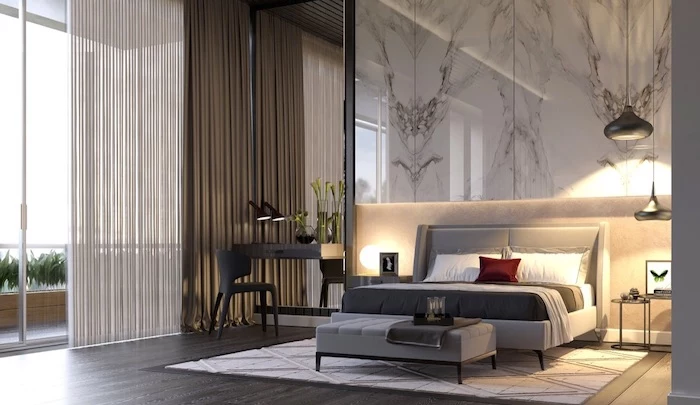
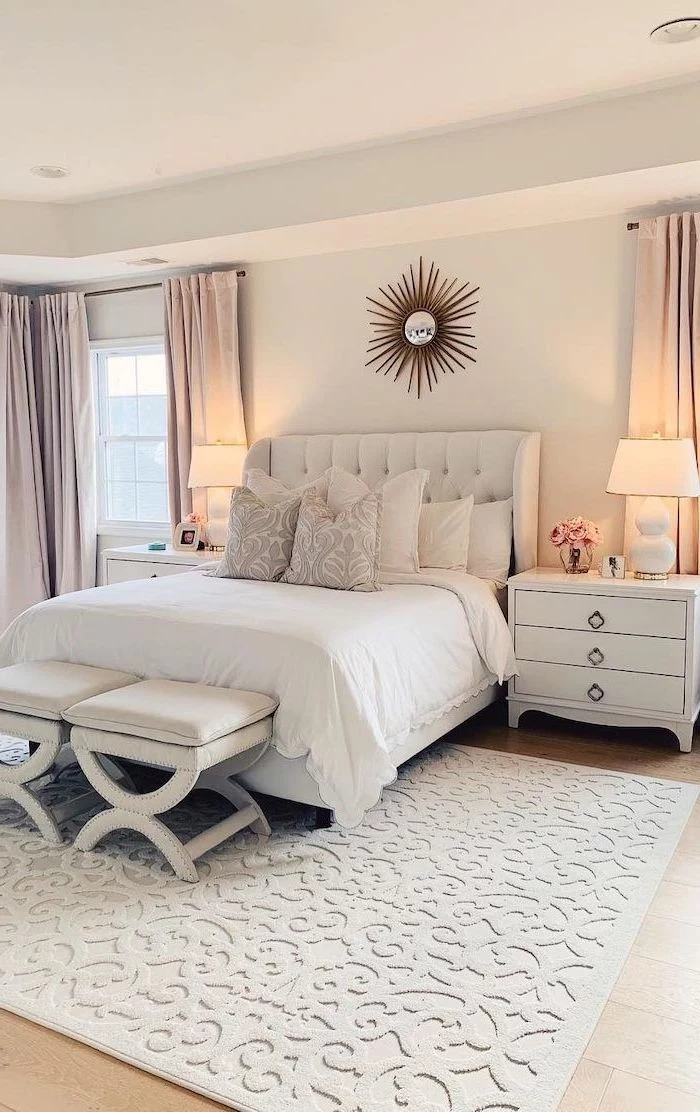
A famous 1989 NASA study found that common houseplants can remove up to 87% of air toxins in 24 hours.
For the bedroom, choose low-light tolerant, air-purifying powerhouses like the Snake Plant (which releases oxygen at night), the Peace Lily, or the Pothos. They not only clean the air but also add a vital, calming touch of green.
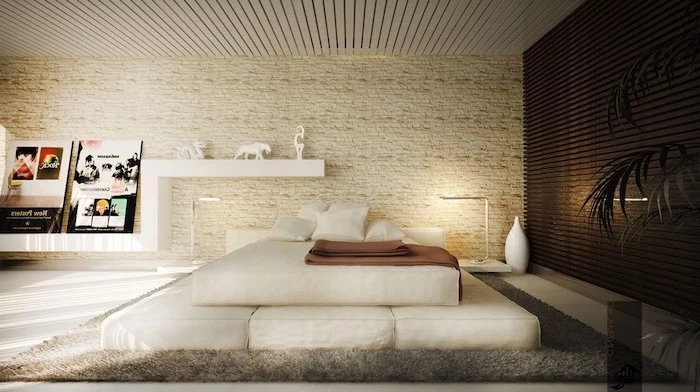
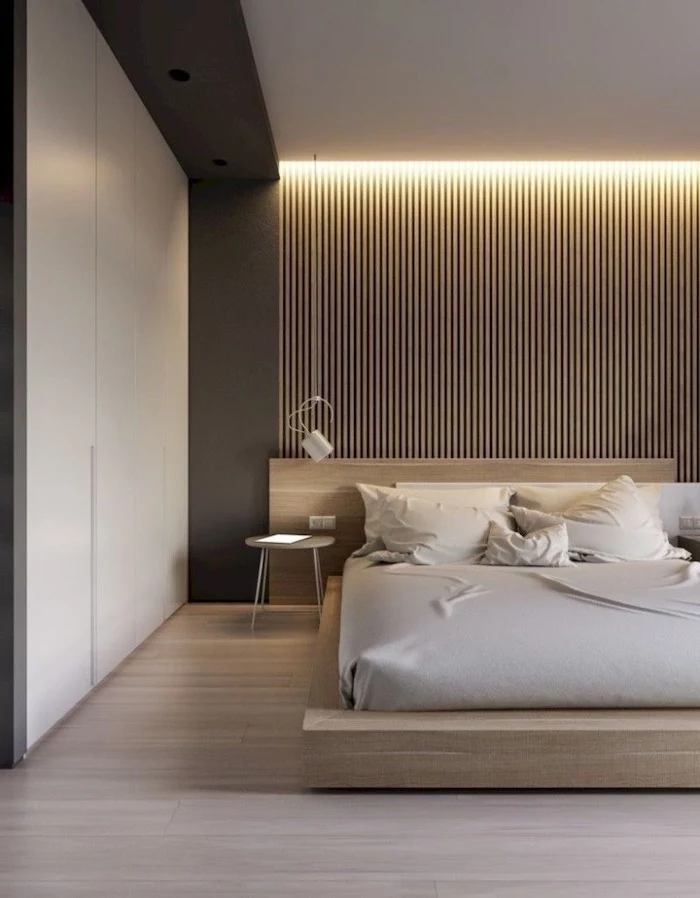
Don’t underestimate the power of a great headboard. It anchors the bed, which is the room’s main focal point, and provides a comfortable backrest for reading. An upholstered, channel-tufted, or solid wood headboard adds a layer of texture and intention that a bare wall simply can’t match.
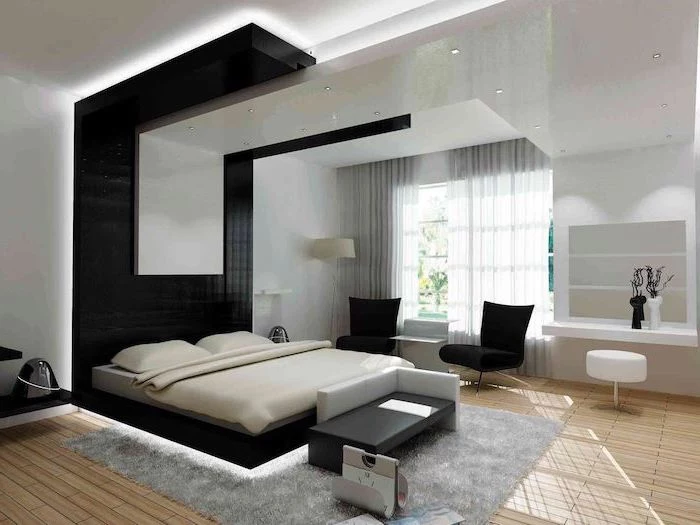
How do I choose the right curtains for my bedroom?
Think function first, then form. For ultimate rest, you need blackout capability. This can be achieved with blackout-lined curtains or by layering a sheer curtain (for daytime privacy) with a separate blackout roller blind. For installation, mount the rod high and wide—at least 4-6 inches above and beyond the window frame. This makes the window look larger and blocks more light.
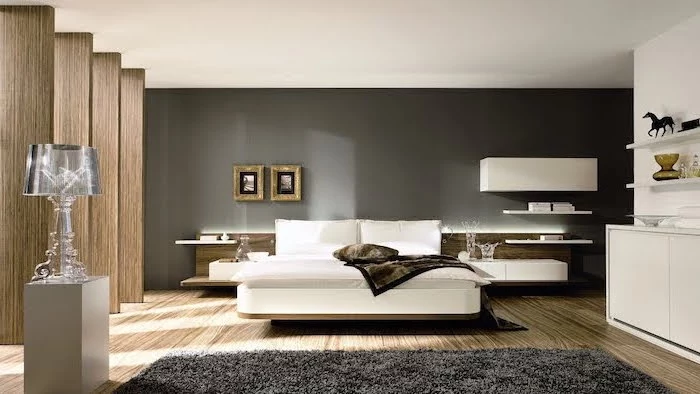
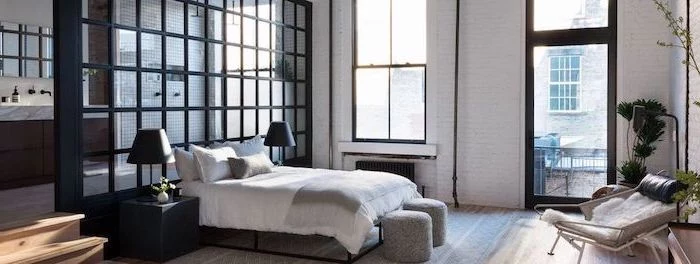
Look to the Japanese philosophy of Wabi-Sabi for inspiration. It finds beauty in imperfection and impermanence. In the bedroom, this means choosing items with history and character: a slightly worn wooden stool, a hand-thrown ceramic vase, or linen bedding that celebrates its natural creases. It’s about creating a space that feels authentic and human, not a showroom.
A full-length mirror does more than just show your reflection. Leaned against a wall, it bounces light around the room, making the space feel larger and brighter. It also adds a casual, elegant touch without the need for drilling holes.

